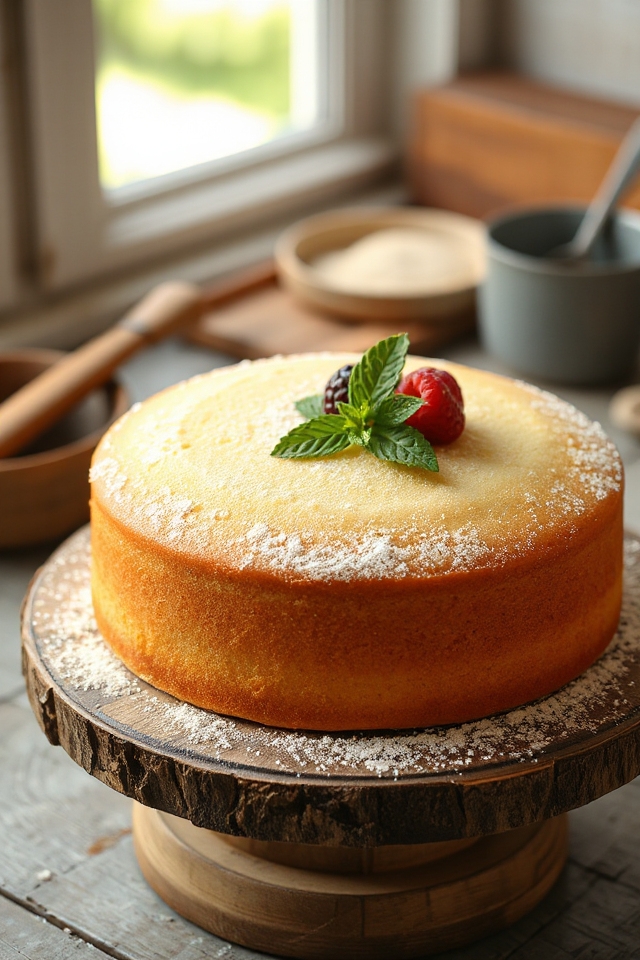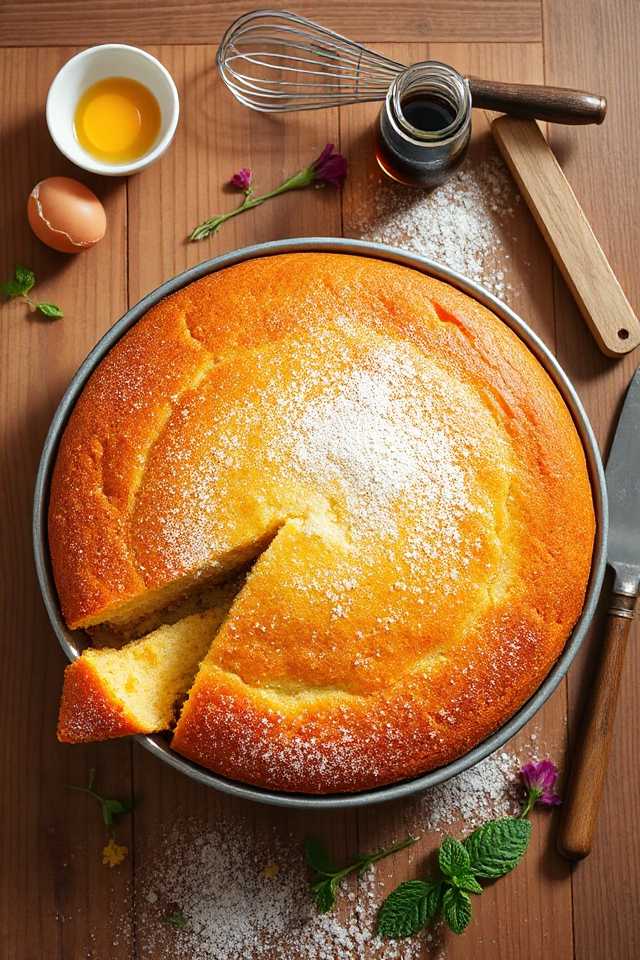Why You’ll Love This Butter Cake Recipe
You’ll love this butter cake recipe because it delivers a perfect blend of rich flavors and a moist texture that keeps you coming back for more.
Every bite melts in your mouth, and it’s the kind of cake that makes every occasion feel special. I can’t get enough of its buttery goodness, and I know you’ll feel the same.
The simplicity of the preparation means you can whip it up anytime, whether for a family gathering or a quiet evening at home.
Trust me, once you try it, this butter cake will become a staple in your baking repertoire.
Ingredients of Butter Cake
When it comes to baking a delicious butter cake, having the right ingredients is key. Each component plays a significant role in creating that rich, buttery flavor and moist texture that makes this cake a true delight. So, let’s explore what you’ll need to whip up this scrumptious treat. Don’t worry, it’s not a long list and you probably have most of these items hanging out in your kitchen already.
Here’s what you’ll need:
- 250 g unsalted butter
- 210 g caster sugar
- 4 eggs
- 1 teaspoon vanilla essence
- 200 g self-rising flour (sifted)
- 1/2 teaspoon salt
- 4 tablespoons milk
Now, while I’m listing these ingredients, let’s take a moment to chat about them. Unsalted butter is a must; it gives you control over the saltiness of your cake, which is essential.
And caster sugar? It’s finer than regular sugar, which helps it blend beautifully into the butter, creating that light and fluffy texture we crave. If you don’t have self-rising flour, you can use all-purpose flour and add a bit of baking powder, but honestly, who needs that extra step? You want to keep this simple, right?
Also, I highly recommend using fresh eggs for the best results. Trust me, old eggs are like that one friend who always shows up late to the party—just not worth it.
How to Make Butter Cake

Making a butter cake is a delightful process that fills your kitchen with the warm, inviting scent of baking. First things first, preheat your oven to 170°C (that’s about 340°F for my friends in the U.S.), and while that’s warming up, grab your trusty 9-inch cake pan. Grease it up and add a sprinkle of flour to make sure your cake slides out smoothly when it’s done. Nobody wants a cake disaster, right?
Now, let’s get to the heart of the matter: creaming the butter. Take 250 g of unsalted butter and 210 g of caster sugar, and toss them into a large mixing bowl. Use a mixer, if you have one, or your own two hands if you’re feeling adventurous. Beat them together until the mixture is light and fluffy—this step is vital. Think of it as the cake’s way of getting pumped up for the big bake.
Once that’s done, crack in 4 eggs, one at a time, mixing well after each addition. Seriously, take your time; it’s like giving a little love to the batter. Then, add in 1 teaspoon of vanilla essence. Ah, the smell is heavenly already, isn’t it?
Next up, it’s time to fold in the dry ingredients. Gently add in 200 g of self-rising flour that you’ve sifted along with 1/2 teaspoon of salt. I like to do this bit by bit to avoid a flour explosion in the kitchen—trust me, it can get messy.
Keep mixing until everything is just combined, then add in 4 tablespoons of milk to give the cake that moist, tender crumb we all love. Once your mixture is smooth and creamy, pour it into the prepared cake pan, leveling it out nicely. Don’t forget to create a shallow well in the center; it helps the cake rise evenly.
Pop that beauty in the oven for about 45-55 minutes, and you’ll know it’s ready when a toothpick comes out clean. Just imagine the deliciousness that awaits you. It’s worth the wait, I promise!
Butter Cake Substitutions & Variations
After you’ve mastered the classic butter cake, it’s fun to explore different substitutions and variations to make the recipe your own.
For a lighter option, I sometimes swap half the butter for Greek yogurt. If I’m feeling adventurous, I add citrus zest or spices like cinnamon for extra flavor. You can also substitute almond extract for vanilla for a unique twist.
For a gluten-free version, I use a 1:1 gluten-free flour blend. And let’s not forget about mix-ins—chocolate chips, nuts, or dried fruit can elevate your cake.
Experimenting is key, so don’t hesitate to try something new!
What to Serve with Butter Cake
Serving butter cake can be just as delightful as baking it, especially when you pair it with the right accompaniments.
I love to serve it warm with a scoop of vanilla ice cream or a dollop of fresh whipped cream. A drizzle of rich chocolate sauce or a sprinkle of powdered sugar adds a touch of elegance.
For a fruity twist, try pairing it with fresh berries or a fruit compote. If you’re feeling adventurous, a side of lemon curd offers a zesty contrast.
Each pairing enhances the cake’s buttery richness, making every bite an unforgettable experience. Enjoy!
Additional Tips & Notes
While baking a butter cake is straightforward, a few tips can elevate your results.
First, verify your butter’s at room temperature for easy creaming; it makes a noticeable difference in texture. I also recommend using high-quality vanilla extract for a richer flavor.
Don’t skip the step of leveling the batter and creating a shallow well; this helps the cake rise evenly.
When checking for doneness, remember that every oven varies—start checking at 45 minutes.
Finally, let your cake cool in the pan for about 10 minutes before transferring it to a wire rack. Enjoy your baking adventure!
